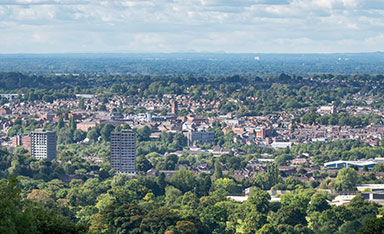4 key considerations for agricultural property relief
1. Check who owns the land
Unlike business property relief where 100% relief from inheritance tax on the market value of the land may be obtained, agricultural property relief is only available on the agricultural value of the land. In many cases, the market value is much higher, particularly where the land has development potential.
However, where the farming operation is carried out by a partnership, and the land is owned personally by the partner, only 50% business property relief is available. In this case, it would be a good idea to take advice and consider the feasibility of transferring the land into the partnership to maximise the reliefs available.
Always check the deeds as land may have been held for many years by different generations of a farming family. There may be some unexpected surprises if land has previously been owned jointly and hasn’t been transferred into an individual farmer’s name.
2. Check your tenancy agreement!
Another pitfall to consider is where you have a tenancy agreement that was put in place before April 1995. In this case, it is only under very limited circumstances that the full 100% relief is available and instead only 50% relief may be claimed.
Inheritance tax is currently 40%, so a change of tenancy agreement could have a huge impact on the amount of inheritance tax payable following a death.
Landowners with tenancy agreements in place should check their paperwork and seek advice to consider whether it would be sensible for the tenancy agreement to be updated.
Letting farmland may have inheritance tax consequences on the main farmhouse and jeopardise a claim for agricultural relief so it is worth taking advice before agreements are put in place.
3. Check your grazing licence
Sometimes landowners have a grazing licence in place which states that they will provide a number of services in relation to the land and that the person occupying the land is merely grazing. Such services may include the husbandry of the land, fertilising and seeding and keeping boundaries in good repair. It should also be seasonal. The reason for doing so, is to demonstrate that the land is still occupied by the landowner for agricultural purposes, and so that their farmhouse may benefit from the relief. However, if this is not what is happening on the ground, HMRC will likely dismiss such a claim.
Landowners with grazing licences should check whether their agreement is up-to-date and if it reflects what is happening in reality. It may be that increasing a little activity now could result in a much lower inheritance tax bill in the future.
4. Check if your business qualifies for relief
Whether agricultural property relief will apply depends on whether the land is occupied for the purposes of agriculture. For example, if you are running a livery from your land, it is unlikely to qualify for agricultural property relief. However, it may qualify for business property relief depending upon the type of help offered.
A ‘DIY’ livery is unlikely to benefit from relief, whereas a full service livery probably will. Landowners seeking to run such an enterprise should seek advice to maximise the reliefs available.
For further information on agricultural property relief, please contact Vicky Timothy on 0161 475 1209 or email victoria.timothy@sasdaniels.co.uk.
4 key considerations for agricultural property relief
1. Check who owns the land
Unlike business property relief where 100% relief from inheritance tax on the market value of the land may be obtained, agricultural property relief is only available on the agricultural value of the land. In many cases, the market value is much higher, particularly where the land has development potential.
However, where the farming operation is carried out by a partnership, and the land is owned personally by the partner, only 50% business property relief is available. In this case, it would be a good idea to take advice and consider the feasibility of transferring the land into the partnership to maximise the reliefs available.
Always check the deeds as land may have been held for many years by different generations of a farming family. There may be some unexpected surprises if land has previously been owned jointly and hasn’t been transferred into an individual farmer’s name.
2. Check your tenancy agreement!
Another pitfall to consider is where you have a tenancy agreement that was put in place before April 1995. In this case, it is only under very limited circumstances that the full 100% relief is available and instead only 50% relief may be claimed.
Inheritance tax is currently 40%, so a change of tenancy agreement could have a huge impact on the amount of inheritance tax payable following a death.
Landowners with tenancy agreements in place should check their paperwork and seek advice to consider whether it would be sensible for the tenancy agreement to be updated.
Letting farmland may have inheritance tax consequences on the main farmhouse and jeopardise a claim for agricultural relief so it is worth taking advice before agreements are put in place.
3. Check your grazing licence
Sometimes landowners have a grazing licence in place which states that they will provide a number of services in relation to the land and that the person occupying the land is merely grazing. Such services may include the husbandry of the land, fertilising and seeding and keeping boundaries in good repair. It should also be seasonal. The reason for doing so, is to demonstrate that the land is still occupied by the landowner for agricultural purposes, and so that their farmhouse may benefit from the relief. However, if this is not what is happening on the ground, HMRC will likely dismiss such a claim.
Landowners with grazing licences should check whether their agreement is up-to-date and if it reflects what is happening in reality. It may be that increasing a little activity now could result in a much lower inheritance tax bill in the future.
4. Check if your business qualifies for relief
Whether agricultural property relief will apply depends on whether the land is occupied for the purposes of agriculture. For example, if you are running a livery from your land, it is unlikely to qualify for agricultural property relief. However, it may qualify for business property relief depending upon the type of help offered.
A ‘DIY’ livery is unlikely to benefit from relief, whereas a full service livery probably will. Landowners seeking to run such an enterprise should seek advice to maximise the reliefs available.
For further information on agricultural property relief, please contact Vicky Timothy on 0161 475 1209 or email victoria.timothy@sasdaniels.co.uk.




